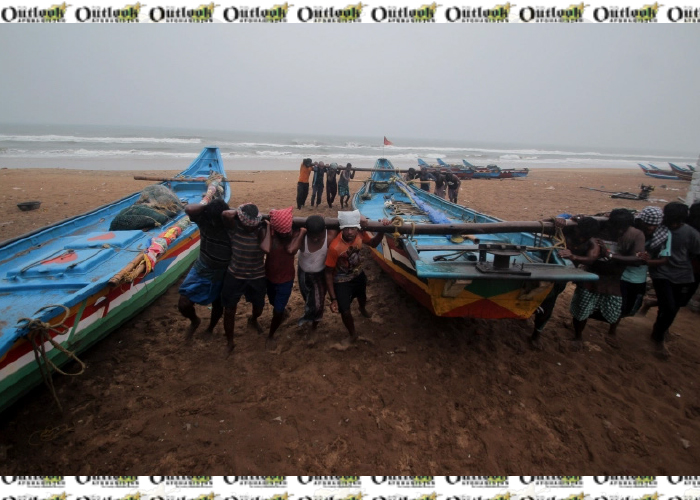Tens of thousands of people have been evacuated in low-lying areas of two Indian states and moved to cyclone shelters to escape a powerful storm barreling towards the eastern coast.
Cyclone Yaas is set to turn into a “very severe cyclonic storm” with sustained wind speeds of up to 177 kilometres (110 miles) per hour, the India Meteorological Department said on Tuesday.
The cyclone is expected to make landfall early on Wednesday in Odisha and West Bengal states.
The cyclone which comes amid a devastating coronavirus surge complicates India’s efforts to deal with these crises just 10 days after Cyclone Tauktae hit India’s west coast and killed more than 150 people.
Thousands of emergency personnel have been deployed in the coastal regions of the two states for evacuation and any possible rescue operations, said SN Pradhan, the director of India’s National Disaster Response Force.
India’s air force and navy were also on standby to carry out relief work.
Fishing trawlers and boats have been told to take shelter until further notice as forecasters warned of high tidal waves.
In West Bengal, authorities were scrambling to move tens of thousands of people to cyclone shelters. Officials said at least 20 districts in the state will feel the brunt of the storm.
Evacuations in coastal districts and the Sundarbans mangrove forest, a UNESCO world heritage site, started on Sunday, West Bengal disaster management minister Javed Ahmed Khan said.
“We have to evacuate nearly half a million people … to schools (and) government offices, which have been turned into cyclone centres to provide shelter to these people,” Khan told the AFP news agency.
In Odisha, a state already battered by coronavirus infections, authorities evacuated nearly 15,000 people living along the coast and moved them to cyclone shelters, senior officer Pradeep Jena said.
In a televised address on Monday, the state’s chief minister, Naveen Patnaik, appealed to people being moved to cyclone shelters to wear double masks and maintain social distancing.
He asked authorities to distribute masks to the evacuated people. “We have to face both the challenges simultaneously,” Patnaik said.
In neighbouring Bangladesh, authorities asked all fishing boats and trawlers over the north Bay of Bengal and the deep sea to move closer to the coast ahead of Yaas approaching.
A weather bulletin from the country’s Meteorological Department in Dhaka said that ships should leave maritime ports of Chattogram, Mongla, Cox’s Bazar and Payra.
In Sri Lanka, the weather bureau warned the island nation’s fishermen not to venture into the Bay of Bengal.
“This cyclone spells double trouble for millions of people in India as there is no respite from COVID-19. The country is being slammed by a second enormous cyclone in two weeks and hitting areas where COVID infections and deaths have been at record highs,” Udaya Regmi, the South Asia head of delegation of the International Federation of Red Cross and Red Crescent Societies (IFRC) said in a statement.
“Indian Red Cross volunteers are working alongside authorities to support the safe evacuation of people who are in the direct path of the cyclone, preparing rafts in case of storm surges and flooding and relief supplies such as food rations,” Regmi said.
Scientists say cyclones in India are becoming more frequent and changing climate patterns have caused them to become more intense.
Last May, nearly 100 people died in Cyclone Amphan, the most powerful storm in more than 10 years to hit eastern India, including West Bengal. It flattened villages, destroyed farms and left millions without power in eastern India and Bangladesh.
In the coastal areas of Bangladesh, thousands of people are still recovering after last year’s Cyclone Amphan, with more than 100,000 still living in temporary shelters, the IFRC said in its statement.
Home » World » Thousands Evacuated in India as Strong Cyclone Yaas Inches Closer
Thousands Evacuated in India as Strong Cyclone Yaas Inches Closer

